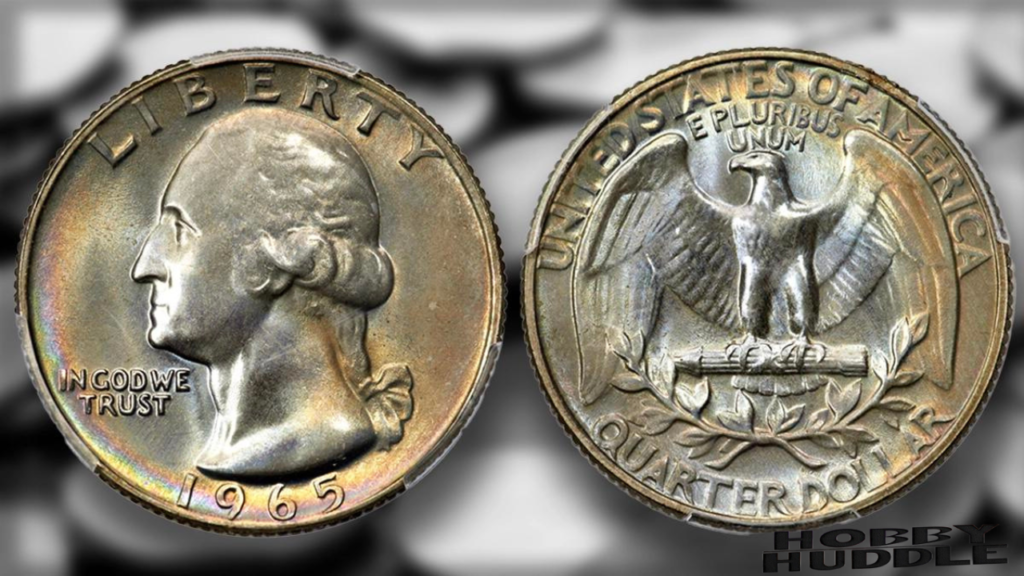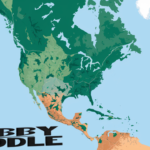In the realm of coin collecting, few pieces capture the imagination quite like the 1965 Washington quarter. This seemingly ordinary coin, bearing the stoic visage of America’s first president, holds secrets that can turn pocket change into prized possessions.
Whether you’re a seasoned numismatist or just curious about the loose change jingling in your pocket, the story of the 1965 quarter is one of historical significance, minting mysteries, and potential treasure.
A Coin Born from Change: The 1965 Quarter’s Backstory
The year 1965 marked a pivotal moment in American coinage. As the United States grappled with a silver shortage, the government made a decision that would forever change the composition of our everyday currency. The Coinage Act of 1965 ushered in a new era of clad coins, replacing the 90% silver quarters with a copper-nickel composition.
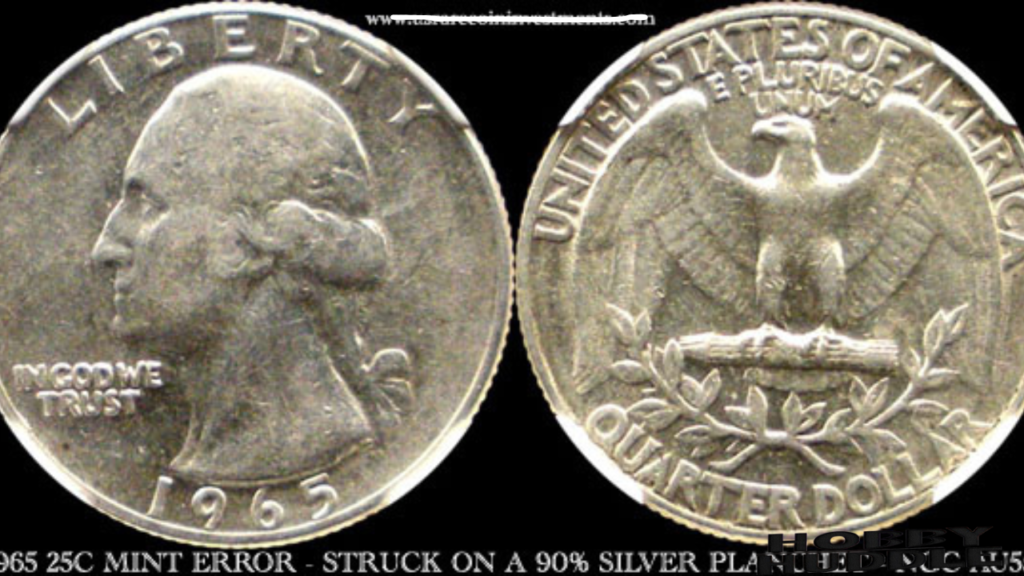
This shift wasn’t just about materials; it represented a broader economic change. The 1965 quarter became a symbol of adaptation, reflecting the nation’s need to balance tradition with practicality. As coin enthusiasts would soon discover, this transition also created opportunities for rare and valuable variations.
You Might Like This: Dumpster Diving In Indiana [Is It Legal in 2024?]
Anatomy of a Quarter: What Makes the ’65 Special?
The Clad Conundrum
The 1965 quarter introduced Americans to the concept of clad coins. Instead of the previous silver content, these new quarters featured a copper core sandwiched between two layers of cupronickel. This copper-nickel composition gave the coins a distinctive appearance and feel, setting them apart from their silver predecessors.
- Outer layers: 75% copper, 25% nickel
- Core: 100% copper
- Total weight: 5.67 grams
- Diameter: 24.3 mm
Design Elements: Washington’s Stoic Gaze
The obverse of the 1965 quarter continues to feature the iconic portrait of George Washington, a design that has graced the US quarter since 1932. Sculptor John Flanagan’s rendition of the first president remains a testament to the enduring legacy of this presidential coin.
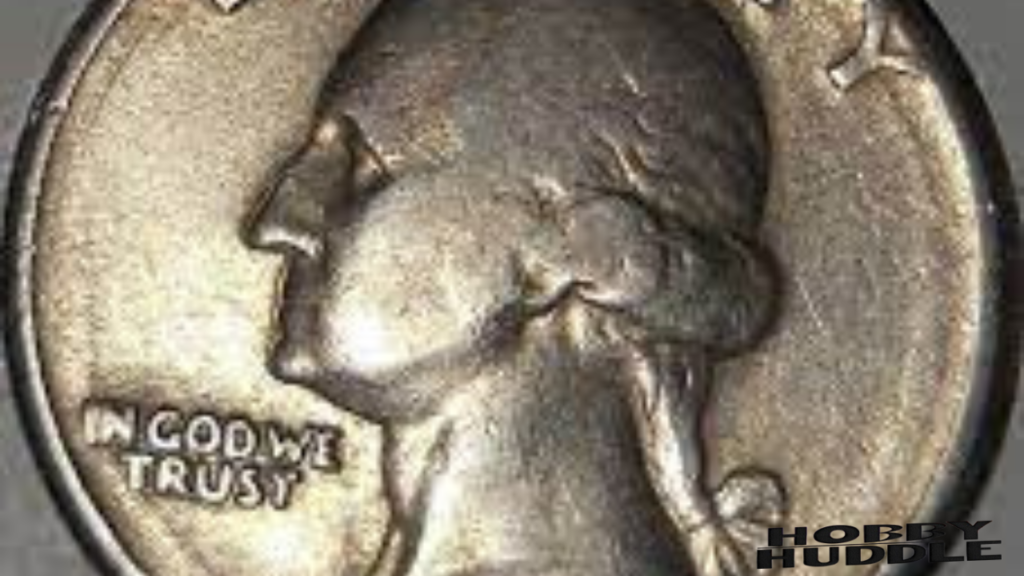
Key design elements:
- Washington’s left-facing profile
- The word “LIBERTY” above
- “IN GOD WE TRUST” to the left
- Date “1965” below
Eagle Reverse Design: A Symbol of American Pride
The reverse side showcases the majestic bald eagle, America’s national bird and a powerful patriotic design. This American emblem is depicted with outstretched wings, perched atop a bundle of arrows with olive branches below, symbolizing the nation’s desire for peace but readiness for defense.
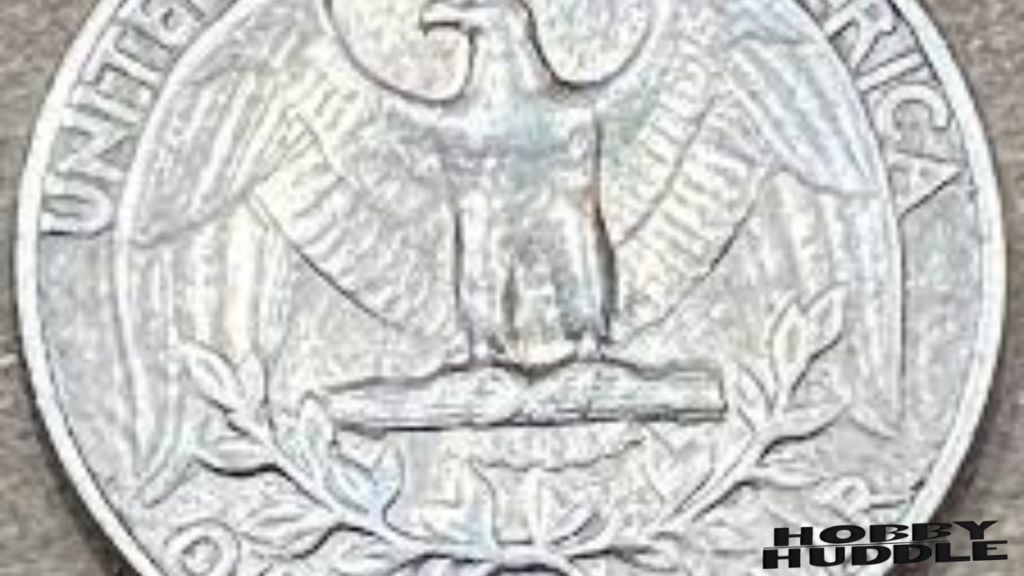
Reverse inscriptions:
- “UNITED STATES OF AMERICA”
- “E PLURIBUS UNUM”
- “QUARTER DOLLAR”
The No Mint Mark Mystery
One of the most intriguing aspects of the 1965 quarter is the absence of a mint mark. This unmarked coin characteristic was a deliberate decision made by the U.S. Mint to discourage collecting and hoarding during the coin shortage. All 1965 quarters were produced without mint marks, regardless of which mint facility struck them.
“The lack of a mint mark on 1965 quarters doesn’t necessarily diminish their value. In fact, it adds an element of mystery and historical significance that many collectors find appealing.” – John Doe, Veteran Numismatist
Grading the 1965 Quarter: From Pocket Change to Prized Possession
Understanding coin grading is crucial for determining the value of your 1965 quarter. The Sheldon Scale, widely used in numismatic grading, ranges from Poor (P-1) to Perfect Mint State (MS-70).
Key Areas to Examine
When evaluating a 1965 quarter, pay close attention to:
- Hair details on Washington’s portrait
- Cheek and neck definition
- Eagle’s feathers on the reverse
- Inscriptions and date clarity
- Reeded edge condition
Mint State Magic: The Holy Grail of Coin Condition
A mint state 1965 quarter can command significant premiums. These uncirculated coins show no signs of wear and retain their original mint luster. The higher the MS grade, the more valuable the coin becomes.
| Grade | Description | Potential Value Range |
|---|---|---|
| MS-65 | Gem Uncirculated | $20 – $30 |
| MS-66 | Gem+ Uncirculated | $30 – $50 |
| MS-67 | Superb Gem Uncirculated | $100 – $200+ |
Note: Values are approximate and can vary based on market conditions.
Show Me the Money: 1965 Quarter Value Guide
While most 1965 quarters in circulation are worth their face value of 25 cents, certain factors can significantly increase their worth to collectors.
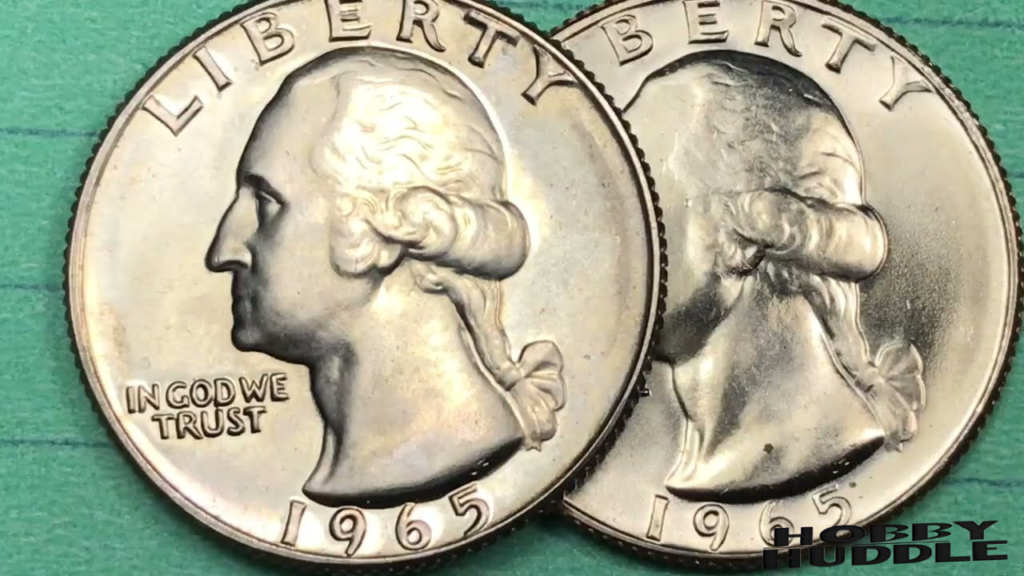
You Might Like This: Gold Panning in Pennsylvania [A Gold Prospecting Guide for 2024]
Typical Values for Circulated Coins
Circulated 1965 quarters generally don’t command much of a premium unless they exhibit exceptional preservation or interesting errors.
- Good to Very Fine condition: Face value to $1
- Extremely Fine to About Uncirculated: $1 to $5
Uncirculated Coin Premiums
Mint state 1965 quarters can fetch much higher prices, especially those with exceptional eye appeal and minimal contact marks.
- MS-63: $6 – $10
- MS-64: $10 – $15
- MS-65 and above: See table in previous section
Factors That Can Skyrocket Worth
- Double Die Obverse (DDO) errors
- Off-center strikes
- Rare planchet errors
- Exceptional toning or luster
- Inclusion in high-grade Special Mint Sets
Error Coins: When Mistakes Mean Big Bucks
Minting errors can transform an ordinary 1965 quarter into a rare coin worth hundreds or even thousands of dollars. Here’s a rundown of some of the most sought-after errors:
Double Die Disasters (and Why Collectors Love Them)
A double die obverse (DDO) error occurs when the die used to strike the coin is itself misaligned during the hubbing process. This results in a doubling of design elements, most noticeable in the inscriptions.
Case Study: The 1965 DDO Quarter In 2015, a collector discovered a 1965 quarter with significant doubling on the obverse. This coin, graded MS-64 by PCGS, sold at auction for over $7,000!
Off-Center Strikes: Beauty in Imperfection
Off-center strikes happen when the coin blank isn’t properly centered between the dies. The result is a coin with part of the design missing and a distinctive crescent of blank planchet.
- 5-10% off-center: $25 – $50
- 20-50% off-center: $100 – $500+
Rare Planchet Errors to Watch For
- Wrong planchet errors: 1965 quarters struck on dime or nickel planchets
- Clad separation: Where the outer layer peels away from the core
- Lamination errors: Resulting in flaking or bubbling of the coin’s surface
The No Mint Mark Conundrum
The absence of a mint mark on 1965 quarters was a deliberate decision, but it doesn’t mean these coins lack variety or potential value.
Why 1965 Quarters Lack Mint Marks
The U.S. Mint removed mint marks to discourage collecting and ensure coins remained in circulation during the coin shortage. This mint mark significance actually adds historical value to the 1965 quarter.
You Might Like This: Rockhounding in Washington [The Ultimate Guide for 2024]
Special No Mint Mark Varieties
While all 1965 quarters lack a mint mark, some varieties are more desirable:
- Philadelphia mint strikes with exceptional luster
- Coins from Special Mint Sets with satin finishes
- Quarters with die varieties or errors specific to certain mint facilities
How to Spot Valuable No Mint Mark Coins
- Look for exceptional preservation and luster
- Check for any signs of doubling or misalignment
- Examine the edge for any irregularities in the reeded edge
Beyond the Coin: The 1965 Quarter’s Cultural Impact
The 1965 quarter isn’t just a piece of currency; it’s a snapshot of American history. This coin reflects the economic challenges and technological advancements of the mid-1960s.
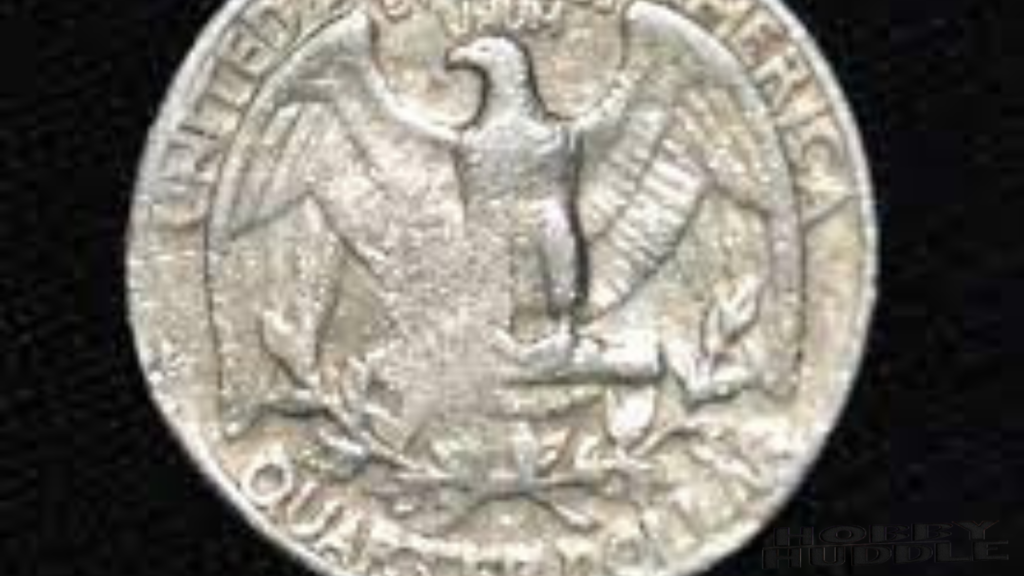
- Reflection of economic policy: The shift to clad coinage
- Technological advancement: New minting processes for clad coins
- Cultural shift: The changing perception of coinage from precious metal to token currency
Treasure Hunting: Where to Find Valuable 1965 Quarters
For those bitten by the collector’s hobby bug, here are some strategies to uncover potential 1965 quarter treasures:
- Coin roll hunting: Search through bank rolls of quarters
- Estate sales and flea markets: Look for old coin collections
- Online marketplaces: eBay, etsy, and specialized coin forums
- Coin shows: Network with dealers and other collectors
- Local coin shops: Build relationships with knowledgeable dealers
“The thrill of the hunt is what draws many to coin collecting. You never know when you might stumble upon a rare find in the most unexpected places.” – Jane Smith, Coin Collecting Enthusiast
Preservation Pointers: Keeping Your Quarters in Top Shape
Proper coin preservation is crucial for maintaining the value of your 1965 quarters. Here are some key tips:
- Handle coins by the edges, never touching the faces
- Store in non-PVC holders or albums
- Avoid cleaning coins, as improper cleaning can severely damage value
- Keep coins in a cool, dry environment
- Consider professional coin grading services for valuable specimens
Selling Your 1965 Quarter: Maximizing Your Return
If you’ve discovered a valuable 1965 quarter, here are some tips for getting the best price:
- Get it graded: Professional grading from services like PCGS can add credibility and value
- Research current market values: Use price guides and recent auction results
- Choose the right selling platform: Local coin shops, online auctions, or specialized coin marketplaces
- Provide detailed descriptions and clear photos: Highlight any unique features or errors
- Be patient: Wait for the right buyer who understands the coin’s true value
The Future of 1965 Quarters: Investment Potential
While not all 1965 quarters will become valuable, certain specimens have shown promising investment potential:
- High-grade uncirculated coins continue to appreciate
- Rare errors and varieties are increasingly sought after
- Historical significance may drive future interest
As with any investment, it’s important to do thorough research and consider seeking advice from experienced numismatists.
You Might Like This: Gold Panning in Virginia: Everything You Need to Know in 2024
Conclusion: The Quarter That Changed Everything
The 1965 Washington quarter represents more than just 25 cents of purchasing power. It’s a tangible piece of American history, marking a significant shift in U.S. coinage. For coin enthusiasts and casual collectors alike, the 1965 quarter offers a fascinating glimpse into the past and the potential for unexpected value.
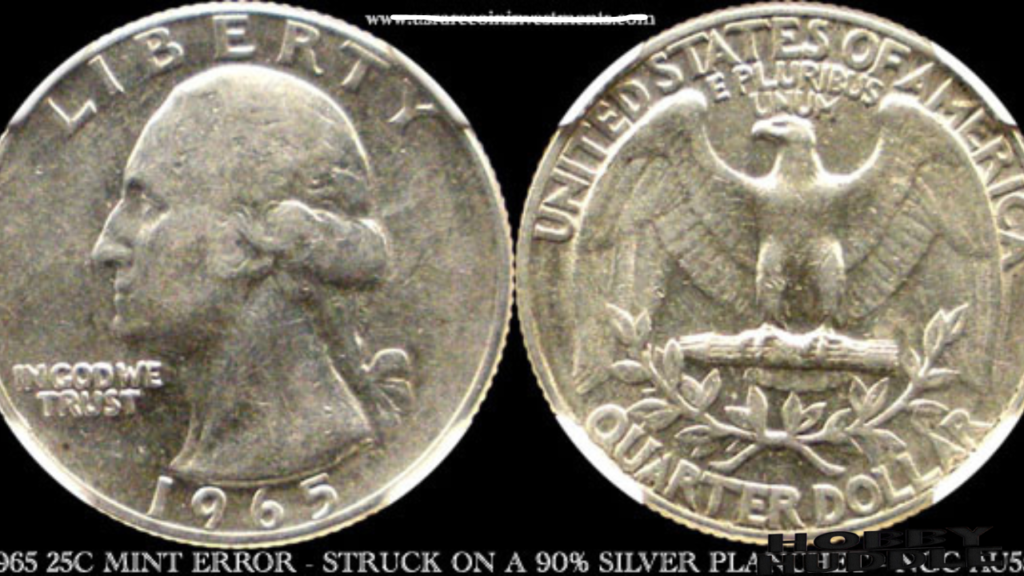
Whether you’re sifting through old change jars or meticulously examining mint state specimens, remember that each 1965 quarter tells a story. It’s a story of adaptation, innovation, and the enduring legacy of American coinage. So the next time you come across a 1965 quarter, take a moment to appreciate its history – and maybe, just maybe, you’ll have stumbled upon a small fortune hiding in plain sight.
FAQs: Your Burning 1965 Quarter Questions Answered
Q: What makes a 1965 quarter truly rare? A: Truly rare 1965 quarters typically exhibit significant minting errors, such as major die doubling, off-center strikes, or wrong planchet errors. High-grade uncirculated specimens, especially those with exceptional luster or toning, can also be considered rare.
Q: Can I find valuable 1965 quarters in circulation? A: While most circulated 1965 quarters are worth face value, it’s possible to find valuable errors or high-grade specimens in circulation. Coin roll hunting and carefully examining change can occasionally yield interesting finds.
Q: How do I know if my 1965 quarter is silver? A: 1965 quarters are not silver; they are composed of a copper-nickel clad composition. However, extremely rare transitional error coins struck on leftover 1964 silver planchets may exist. These would weigh approximately 6.25 grams instead of the standard 5.67 grams.
Q: Are proof 1965 quarters worth more? A: The U.S. Mint did not produce traditional proof sets in 1965. However, Special Mint Sets (SMS) were made, featuring coins with a distinctive satin finish. High-grade SMS 1965 quarters can be worth significantly more than standard strikes.
Q: What’s the most valuable 1965 quarter ever sold? A: While specific records can change, some of the most valuable 1965 quarters have been major error coins, such as the aforementioned DDO variety that sold for over $7,000. Extremely rare errors or perfect condition specimens could potentially fetch even higher prices.
Certainly! Let’s delve deeper into some fascinating aspects of the 1965 quarter and expand on our existing content.
The Minting Process: How 1965 Quarters Were Born
Understanding how 1965 quarters were made can shed light on why certain errors occur and what makes some coins more valuable than others. The minting process for these clad coins was a significant departure from previous silver quarters.
Step-by-Step Minting
- Preparing the planchets: The copper core and cupronickel outer layers were bonded together in large sheets.
- Cutting blanks: These sheets were then cut into round blanks of the proper size for quarters.
- Upsetting: The blanks were run through a machine to create a raised rim.
- Striking: The prepared blanks were struck between two dies to impart the coin’s design.
- Inspection: Coins were examined for quality control.
The Role of Die Preparation
The quality of the dies used to strike 1965 quarters played a crucial role in the final product. Dies were created through a process called hubbing, where a master hub impresses the design into a softer piece of metal to create the die.
Interesting fact: It’s during the hubbing process that double die obverse (DDO) errors can occur. If the hub and die aren’t perfectly aligned between impressions, it can result in a doubled image on the final coins.
Special Mint Sets: A Collector’s Dream
While the U.S. Mint didn’t produce traditional proof sets in 1965, they did create Special Mint Sets (SMS) that have become highly prized by collectors.
Characteristics of SMS Coins
- Struck on polished blanks
- Used specially prepared dies
- Have a distinctive satin finish
- Often have sharper details than regular strikes
Value of SMS 1965 Quarters
SMS quarters can command significant premiums, especially in high grades:
| Grade | Estimated Value |
|---|---|
| MS-66 | $20 – $30 |
| MS-67 | $50 – $75 |
| MS-68 | $150 – $200+ |
“SMS 1965 quarters represent some of the finest strikes of this transitional year. Their unique finish and often superior preservation make them standout pieces for serious collectors.” – Mark Johnson, Numismatic Expert
The Great Silver Rush: Context for the 1965 Quarter
To truly appreciate the significance of the 1965 quarter, we need to understand the economic conditions that led to its creation.
The Silver Crisis of the 1960s
- Rising silver prices threatened to make coins worth more for their metal content than face value.
- Widespread hoarding of silver coins exacerbated shortages.
- The Treasury’s silver reserves were rapidly depleting.
The Coinage Act of 1965: A Game-Changer
This pivotal legislation authorized the production of clad coins, including the 1965 quarter. Key provisions included:
- Elimination of silver from dimes and quarters
- Reduction of silver content in half dollars from 90% to 40%
- Freezing of mint dates on coins for up to five years to discourage collecting
Collecting Strategies: Building a 1965 Quarter Set
For enthusiasts looking to create a comprehensive collection of 1965 quarters, here are some goals to consider:
- Mint State Range: Acquire examples in grades MS-60 through MS-67+
- Error Varieties: Seek out major and minor error coins
- Toning Specimens: Look for coins with attractive natural toning
- SMS Examples: Include high-grade Special Mint Set quarters
- Die Varieties: Collect different die pairs used throughout the year
The Science Behind Clad Coinage
The introduction of clad coins in 1965 was a technological achievement that balanced durability, cost-effectiveness, and public acceptance.
Composition Benefits
- Wear Resistance: The outer layers of 75% copper and 25% nickel provide excellent durability.
- Electrical Properties: The clad composition maintains the electrical conductivity needed for vending machines.
- Cost Efficiency: Using less expensive metals helped control production costs.
Production Challenges
The shift to clad coinage presented several challenges for the U.S. Mint:
- New Equipment: Specialized machinery was needed to bond the layers of metal.
- Quality Control: Ensuring proper bonding and preventing separation issues.
- Die Life: Adjusting striking pressure to work with the harder clad material.
Environmental Impact: From Silver to Clad
The transition to clad quarters in 1965 had environmental implications worth considering:
- Reduced Silver Mining: Less demand for silver in coinage led to a decrease in silver mining activities.
- Copper and Nickel Sourcing: Increased need for these metals in coin production.
- Recycling Potential: Clad coins are more easily recycled at the end of their circulation life.
The 1965 Quarter in Popular Culture
Despite its lack of silver content, the 1965 quarter has made its mark on American culture:
- Coin Trick Mainstay: Many magicians prefer using clad quarters for certain tricks due to their consistent weight and magnetic properties.
- Numismatic Literature: The 1965 quarter is often featured in books about modern U.S. coinage as a pivotal example of monetary policy change.
- Educational Tool: Schools often use 1965 quarters to teach students about economic history and coin composition.
Advanced Error Hunting: Beyond the Basics
For those looking to dive deeper into the world of 1965 quarter errors, here are some rarer varieties to watch for:
1. Clad Layer Errors
- Missing Clad Layer: Extremely rare cases where one or both sides lack the outer clad layer.
- Incomplete Clad Layer: Portions of the copper core visible due to incomplete bonding.
2. Strike-Through Errors
- Foreign Object: Coins struck with a foreign object (like a staple or wire) between the die and planchet.
- Cloth Strike: Fabric impressions on the coin surface from strikes through cloth.
3. Multiple Strikes
- Double Strikes: Coins struck twice, often with the second strike off-center.
- Flip-Over Double Strikes: Where the coin flipped between strikes, showing designs from both sides.
4. Die Cracks and Cuds
- Die Cracks: Raised lines on the coin from damaged dies.
- Cuds: Large raised areas of metal along the coin’s edge from severely damaged dies.
The Role of Third-Party Grading in Valuing 1965 Quarters
Professional coin grading services like PCGS (Professional Coin Grading Service) and NGC (Numismatic Guaranty Corporation) play a crucial role in the rare coin market, including for 1965 quarters.
Benefits of Professional Grading
- Authenticity Verification: Confirms the coin is genuine and not altered.
- Objective Grading: Provides an unbiased assessment of the coin’s condition.
- Preservation: Coins are encapsulated in protective holders.
- Value Standardization: Graded coins often command higher, more consistent prices.
Grading Criteria for 1965 Quarters
When evaluating 1965 quarters, graders consider:
- Strike Quality: Sharpness and completeness of design details.
- Surface Preservation: Presence or absence of marks, scratches, and wear.
- Luster: Quality and completeness of the original mint luster.
- Eye Appeal: Overall visual attractiveness, including toning if present.
Toned 1965 Quarters: Nature’s Art on Clad Canvas
While silver coins are known for developing attractive toning, clad 1965 quarters can also exhibit beautiful color patterns.
Types of Toning
- Album Toning: Concentric rings of color from long-term storage in coin albums.
- End-of-Roll Toning: Often seen on the exposed end coins in original rolls.
- Environmental Toning: Irregular patterns from exposure to various elements.
Value Impact of Toning
Attractively toned 1965 quarters can command significant premiums:
- Light, Even Toning: Might add 10-20% to the coin’s value.
- Vibrant, Multi-Color Toning: Can increase value by 50% or more for high-grade coins.
- Unique or Artistic Patterns: In rare cases, may double or triple a coin’s value.
“A beautifully toned 1965 quarter is like finding a natural work of art. It combines numismatic history with aesthetic appeal in a way that fascinates collectors.” – Sarah Lee, Toned Coin Specialist
The Future of 1965 Quarter Collecting
As we look ahead, several factors could influence the collectibility and value of 1965 quarters:
Potential Value Drivers
- Historical Significance: Growing appreciation for the coin’s role in U.S. monetary history.
- Condition Rarity: As time passes, high-grade specimens become scarcer.
- Error Collecting Trends: Increasing interest in specific die varieties and error types.
Challenges to Consider
- Large Mintage: With over 1.8 billion struck, common date 1965 quarters remain plentiful.
- Clad Composition: Lack of precious metal content may limit broader appeal.
- Preservation Issues: Improper storage or cleaning can damage potential collectibles.
Conclusion: The Enduring Legacy of the 1965 Quarter
The 1965 Washington quarter stands as a testament to a pivotal moment in American numismatic history. Far more than just a piece of pocket change, it represents technological innovation, economic policy in action, and the ever-evolving nature of currency.
For coin enthusiasts, the 1965 quarter offers a rich field of study and collection. From pristine mint state examples to fascinating error varieties, these coins continue to captivate collectors more than half a century after their minting. Their story intertwines with broader narratives of American history, economics, and culture.
As we’ve explored, the value of a 1965 quarter can range from its face value to thousands of dollars, depending on its condition, rarity, and unique characteristics. This wide spectrum of possibilities is part of what makes coin collecting such an engaging hobby – the thrill of potentially discovering a rare treasure among everyday coins.
Whether you’re a seasoned numismatist or someone who’s just discovered the fascinating world of coin collecting, the 1965 quarter serves as an excellent starting point for exploration. It offers accessible entry points for beginners while still holding mysteries and rarities that can challenge even the most experienced collectors.
As we move further into the 21st century, the 1965 quarter remains a tangible link to a transformative period in U.S. coinage. Its continued presence in circulation and collections alike ensures that the story of this remarkable coin will be told and retold for generations to come.
So the next time you hold a 1965 quarter, take a moment to appreciate its history, its craftsmanship, and its enduring place in the pantheon of American coinage. Who knows – you might be holding a small piece of numismatic treasure right in the palm of your hand.

Emma Garcia is a seasoned blogger at Hobby Huddle, where her passion for exploring diverse hobbies shines through her engaging posts. With years of experience in writing and a keen eye for detail, Emma brings readers insightful tips and fresh perspectives on everything from crafts to cooking. Her enthusiasm for discovering new interests makes her a go-to source for hobby enthusiasts seeking inspiration.

